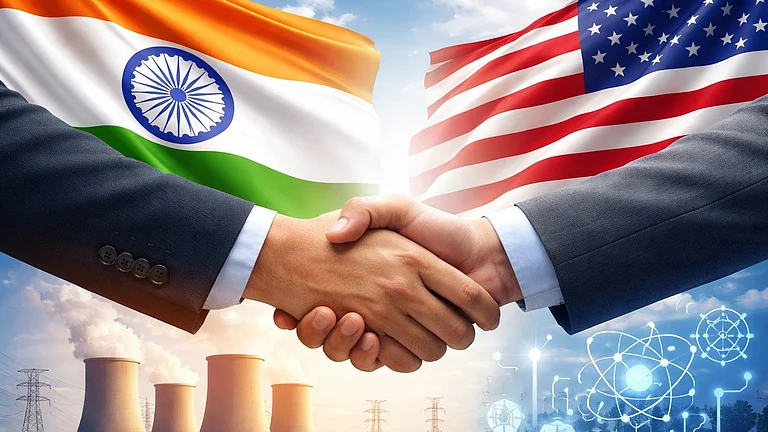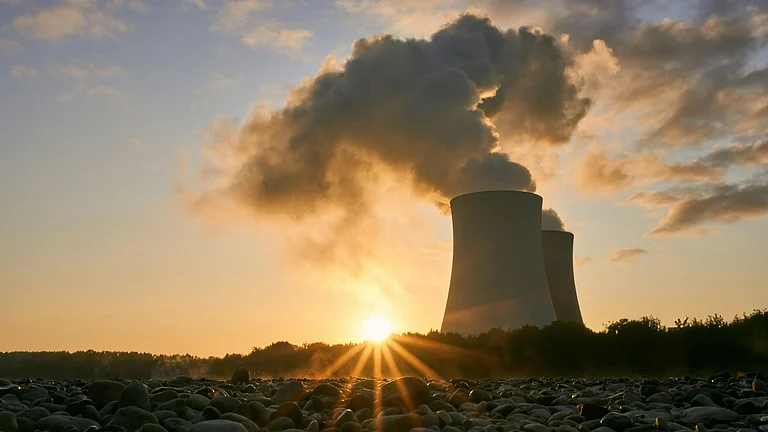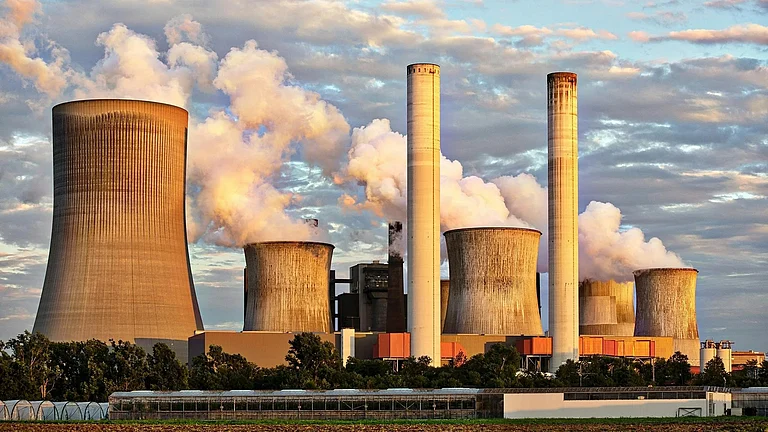With Donald Trump returning to the White House and reaffirming his well-known skepticism towards global warming, a strategic void has emerged in global climate leadership. As India prepares for its upcoming Budget, it is crucial for the country to solidify its position in the global energy transition and take a leadership role in the fight against climate change.
Building on the progress achieved since the 2024 budget, the government now has a pivotal opportunity to introduce policies that accelerate India’s growth in this sector. Simultaneously, addressing challenges like energy storage system, local equipment production, developing transmission infrastructure & financing the energy transition.
Progress & Fallout Since the 2024 Budget
In her final budget speech of the Modi 2.0 government, Finance Minister Nirmala Sitharaman introduced a series of initiatives, including the PM Surya Ghar: Muft Bijli Yojana, efforts to invite the private sector into nuclear energy, and a focus on energy storage. While these initiatives have sparked significant public interest, they have also led to various concerns and fallouts.
“The rooftop solar scheme is expected to receive more attention, especially in the residential segment, given the growing public interest in installing rooftop solar systems, an increase in funding allocation in the 2025 Budget could be anticipated to meet future demand,” said Vikram Reddy V, Vice- President & Co- Group Head-Corporate Ratings, Icra.
The PM Surya Ghar: Muft Bijli Yojana was launched with a total budget allocation of Rs 75,021 crore. It aims to provide free electricity of up to 300 units per month to 1 crore households through rooftop solar installations. The scheme has generated significant interest, with total installations over 6.85 lakh till date.
However, several solar rooftop projects under this scheme are facing significant challenges due to the rising prices of domestically made panels, which have reached unsustainable levels. Many experts believe that for the successful implementation of this scheme, a strong technical backbone is crucial. Further, it is also essential to bring all stakeholders onto a unified platform to enable accurate tracking and forecasting.
The FM in her speech last year also emphasized on the importance of nuclear energy in India’s energy mix and said that the government will partner with the private sector for setting up Bharat Small Reactors, research & development of Bharat Small Modular Reactor, and research & development of newer technologies for nuclear energy. In the beginning of this year only the Nuclear Power Corporation of India Ltd (NPCIL) invited request for proposals from private players to set up 220 MW Bharat Small Reactors for captive use.
However, due to the restrictive nature of the nuclear sector, private players are facing significant hurdles in conducting feasibility studies, as there are only a few empaneled consultations with NPCIL, limiting broader participation.
Anish Mandal, Partner, Deloitte India said that that the lack of a supportive ecosystems makes it difficult for private players to engage in site feasibility, testing and technical assessments. India needs to open up the sector, holistically review current practices, and enable private partnership in RFPs. “The long gestation period of nuclear projects and the complexities surrounding the supply chain is also a major problem for this sector. The current approach of charging a premium needs to be complemented with value creation for the industry to perceive it as a successful Public-Private Partnership (PPP) offering”, he said.
He added that the government needs to create a PPP structure that adds tangible value, facilitating smoother private sector involvement.
Budget 2025 and Industry Expectation
During the COP26 climate summit in Glasgow, PM Modi set an ambitious target for India to reach 500 GW of non-fossil fuel energy capacity by 2030. With a milestone of 200 gigawatts already achieved the country needs to add 50-60 gigawatts every year to achieve the target but the country is deploying only 25 gigawatts annually. To accelerate this pace incentivizing the battery energy storage is important.
Debi Prasad Dash, President, India Energy Storage Alliance (IESA) said that the Government's initial steps through the PLI scheme have been very effective in protecting the domestic industry from increasing Chinese imports. Further, the government also needs to raise customs duties to enhance pricing models for Indian firms.
“The alliance has engaged with various ministries to propose a Rs 9,000 crore support scheme similar to the Production Linked Incentive (PLI) scheme. This initiative would help companies supply Indian gigafactories and explore export opportunities,” he said.
Currently, nearly all of India’s 15 GWh demand for Li-ion batteries is met through imports. This demand is projected to soar to 54 GWh by FY27 and further to 127 GWh by FY30. India imports lithium-ion (Li-ion) batteries from China, Japan, and South Korea, making it one of the largest importers globally. China holds a dominant position in the Li-ion battery market, with approximately 75% of the battery cell manufacturing capacity located there.
However, for battery manufacturing to thrive, the entire value chain needs to be addressed, including raw material sourcing for lithium and other critical minerals. A sourcing mechanism for these materials must be in place, along with fiscal support in the initial years to compete with imports.
Boosting Local Equipment Manufacturing
China dominates every stage of the solar manufacturing supply chain, from polysilicon production to the creation of ingots, wafers, cells, and final module panels. As a result, India is heavily reliant on imports, with around 80% of solar components sourced from China, while only 20% are produced domestically. This dependence highlights the critical need for India to boost its own manufacturing capabilities as it might create new risks for the country.
“While ALMM for modules is already operational and for cells is in draft, expanding ALMM to include supply chain components such as ingots and wafers would enable comprehensive backward integration, bolstering domestic manufacturing,” said Dr. Amit Paithankar, Whole-Time Director & CEO, Waaree Energies Ltd.
He added that the anti-dumping duties (ADD) are another critical measure to diversify and indigenize the supply chain, though their implementation must be gradual to mitigate short-term price fluctuations and maintain the sector's growth momentum.
Developing Transmission Infrastructure & Transition Financing
Another key priority is the development of transmission infrastructure to evacuate power from renewable energy projects. Many renewable energy projects are concentrated in states like Gujarat and parts of southern India, which require robust transmission infrastructure to transport power to demand centers.
Additionally, states with limited solar generation potential will need support for importing power. For instance, a few years ago, the government introduced a scheme to support power evacuation from the Ladakh region, where large-scale solar projects were planned. Experts believe that given the remote locations of these projects and the need for long-distance power lines, similar initiatives may be expected in budget to support transmission infrastructure development.
On the distribution side, funding support for infrastructure upgrades, including smart metering, is likely to see increased allocations. The shift to smart meters is critical for improving billing efficiency, reducing losses, and enhancing revenue collection for distribution companies (Discoms). The government may enhance grants or subsidies to states for these installations.
Financing India’s energy transition requires significant capital. “While Indian companies have raised green bonds in international markets like Singapore and London, the focus must now shift to domestic solutions. Developing local financial instruments, such as green bonds, and incentivizing domestic investors and institutions to participate in energy transition financing can unlock new funding sources,” said Anish.
The upcoming 2025 Budget marks a critical opportunity for India to strengthen its global position in the fight against climate change. The resurgence of climate apathy under Donald Trump's leadership presents a unique opportunity for the country, with significant progress already made in initiatives like rooftop solar schemes, push for nuclear energy etc. Additionally, India must address its manufacturing and technological gaps by fostering domestic investments and collaborating with global players such as Germany and South Korea, as these gaps remain a significant bottleneck for the country’s growth.































